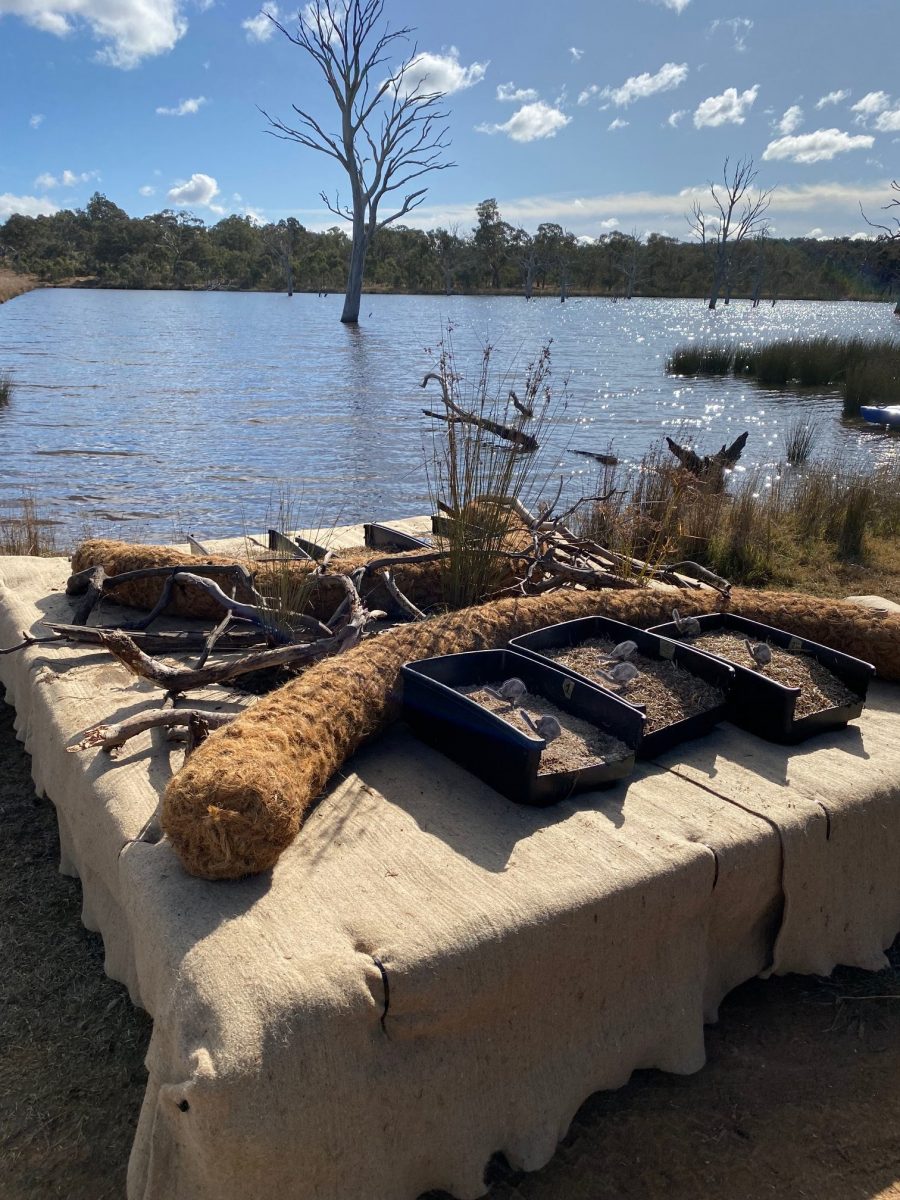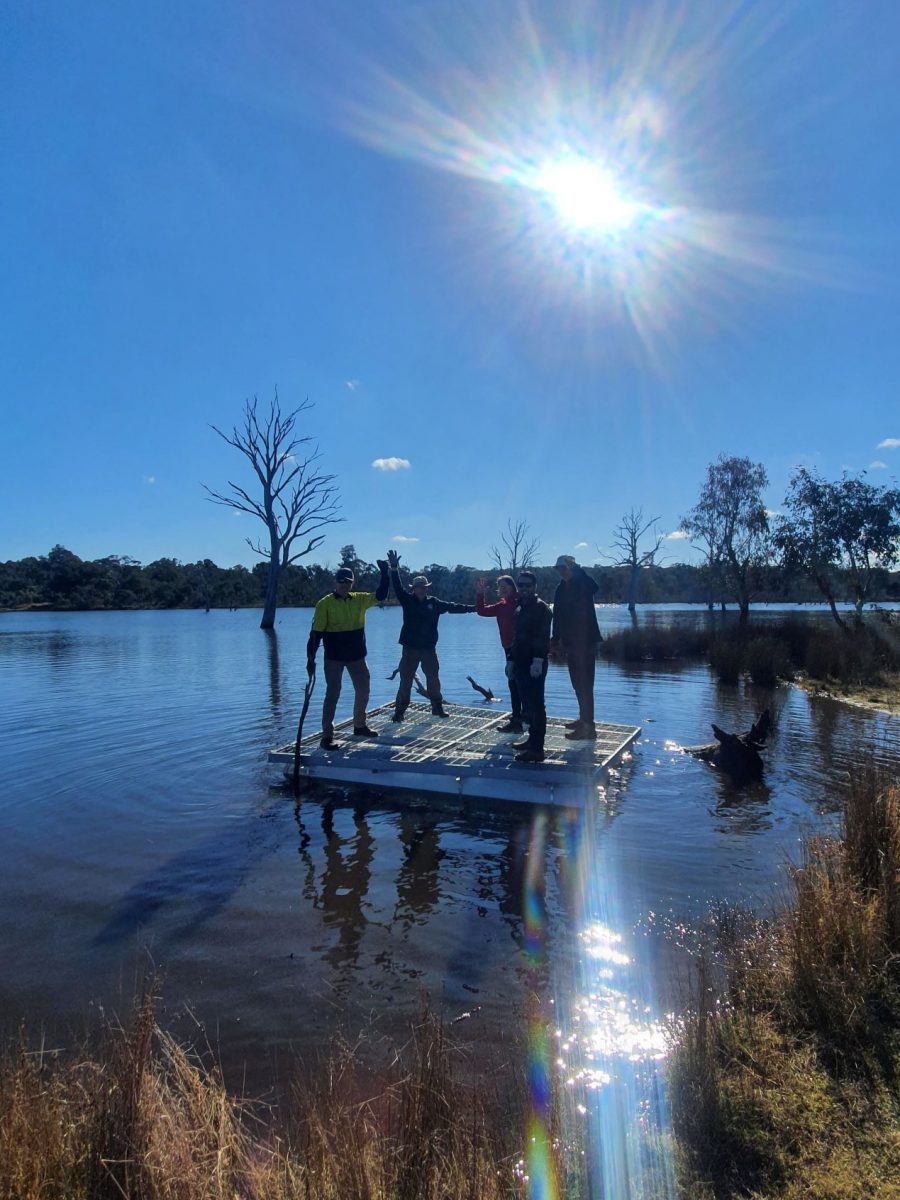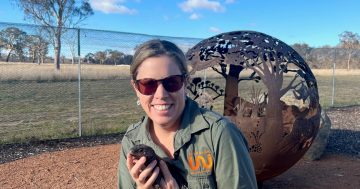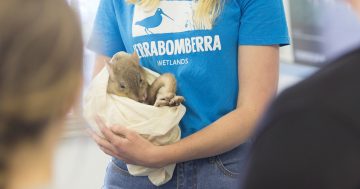
Mulligans Flat’s new turtle island with nesting boxes is already in place on the Canberra sanctuary’s dam. Photo: Mulligans Flat.
Animals, birds – and humans have found sanctuary at Mulligans Flat since the 1200-hectare nature reserve was established in the centre of Canberra almost 20 years ago – but today, a new family is just about to move in.
Volunteers, working with scientific experts, have just built a turtle island at Mulligans Flat, a specially designed safe habitat for the reptiles to lay their eggs away from predators. Such a safe place is vital for turtles who help keep our waterways healthy.
The safe place is also crucial as scientific evidence mounts that turtle species are on the decline nationally, due to previous widespread drought, fox predation – and human activities. Foxes are blamed for raiding more than 90 per cent of turtle nests nationally each year.
Although the vast perimeter fence around Mulligans Flat keeps most predators like foxes out, learning how to establish a secure breeding area for turtles is not only good for Mulligans’ protection program, but for other such habitats nationally.
Community engagement manager at Mulligans Flat, Lauren Brown, said they had been working with the University of Western Sydney (UWS) to look at the best ways to look after the Mulligans Flat turtle population as well as that in the Jerrabomberra Wetlands.
Last year, Mulligans staff and volunteers visited Glenbrook Lagoon in the Blue Mountains – the first turtle island to be built in Australia. The Mulligans island is slightly smaller than the one at Glenbrook so it can be transported easily. It has been designed and made by Mulligans volunteers.

Turtle island volunteers at Mulligans Flat test out the island’s flotation abilities. Photo: Mulligans Flat.
For volunteer Mark Coster, who has project-managed the island, “it was great to see it finally floating”.
Mr Coster, who worked in IT before venturing into the study of environmental monitoring and technology, said he “fell into” helping to project manage the island. “I’m a bit handy with things,” he said, adding that he began volunteering at Mulligans Flat about two years ago because of his love for the environment “and to get out from behind the computer desk”.
“It’s been a great project to be involved with,” he said. “More than half of the materials have been donated, materials that would otherwise have gone to landfill so we’ve been able to recycle a lot.”
He said the project had taken about 12 months to complete, with COVID interruptions, thanks to a core group of about eight volunteers who were regularly involved in working bees.

Mulligans Flat volunteers ensure that the PVC pipe is secured to the frame so the island floats. Photo: Mulligans Flat.
“No-one really had construction experience,” he said. “We were all just handy or interested in helping out.
“It’s great to see it finally come to something.”
The island, about three metres by two and a half metres, is designed to fit on a car trailer if it has to be moved, with PVC pipe used for flotation. It has six nesting boxes for the turtles, with the volunteers now looking at the best soil mixes for the turtles to burrow down into the substrate.
For senior lecturer in zoology and turtle expert Dr Ricky Spencer from the UWS, working on the Mulligans project helps with the protection of turtles by “showing what works and what doesn’t”.
“This is the way forward,” he said. “We’ll do all the trials – it’s one thing to build the island, it’s another to get the turtles to lay there.
“What we want to do is to discover what the turtles want and what they need so we can create a model for a safe breeding ground for them everywhere.”
Dr Spencer also heads WildLab at the UWS, which is committed to integrating traditional with citizen science. He is also behind the 1 Million Turtle project, a citizen science project designed for communities to work together to help protect threatened freshwater turtles.
For other ways citizen scientists can help ensure the survival of our turtle population, go to TurtleSAT.
Volunteers are always welcome at Mulligans Flat. More information can be found on the website.














